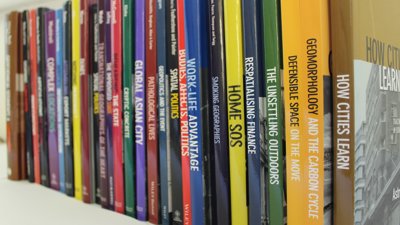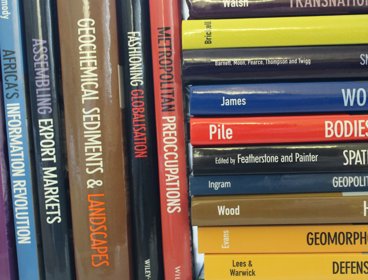By Michael J Bradshaw, University of Warwick
Writing a good review essay is just as challenging and rewarding as writing a research article. Anyone completing a thesis or writing a research grant application finds themselves writing a literature review that places their research in the context of previous work and identifies a research gap that is worthy of further research. However, just as chapters from a PhD seldom make publishable research articles as they stand, so a literature review chapter needs further work before it becomes a good review essay. Undoubtedly, you have the knowledge and the raw materials to write a review essay: this section provides you with some pointers as to where to submit and how to produce successful review essays.
Where to publish
The first thing to be aware of is that many journals do not publish review articles and have an explicit policy of only publishing articles based on original research. Therefore, before you start to write your essay, identify a target journal and make sure that the editors are open to review essays (see Research articles). Most journals now publish a clear statement of aims and scope alongside more detailed notes for contributors on their website and you can also look through recent issues to see if they have review papers.
There are some journals that specialise in publishing review articles. The most well-known to geographers are: the Progress journals (including Progress in Human Geography, Progress in Physical Geography and Progress in Development Studies), Geography Compass and WIREs Climate Change. However, some sections of these journals are populated by commissioned reviews where an individual is asked to provide a series of reviews over a number of years. This is the case with the Progress in Human Geography Progress Reports, for example. In the case of a journal like Geography Compass or WIREs Climate Change, contact the appropriate section editor, because although these journals do commission reviews, they are also open to unsolicited submissions. In general, if you are unsure contact the editors before you waste your time writing an essay that won’t be considered by your target journal.
Getting the level right
Having identified an outlet for your review essay, you need to think about the purpose of your review and its potential readership. Is your essay aimed at other specialists in your field or is it aimed at non-specialists as an introduction to the field? I would argue that this is a key distinction between the Progress journals and Geography Compass, for example. Progress is aimed at other researchers, who have a good deal of prior knowledge; while Geography Compass is aimed at the novice reader (a senior level undergraduate or Masters student) as well as academic staff from geography and other disciplines looking to familiarise themselves with a particular field or issue. The different audiences require you to think carefully about the purpose and structure of your review essay.
Purpose and structure
Your review essay must have a clear purpose and structure to be successful. Simply using it as a vehicle to demonstrate how much you have read is not a recipe for success!
A clear sense of purpose will help you to define the scope of your essay. In other words, how broad or narrow should a topic be? Cast the net too wide and you will struggle to deal with the key issues in sufficient depth; cast it too narrowly and you will not attract sufficient readership to merit publication. That said, topics can be fairly specialised, as long as they are presented with appropriate background and attention to different positions on the topic.
To succeed, a good review essay needs a clear structure, but there is no single best way to do this. Each of the purposes identified above demands a different structure. A good review is organised around themes and not individual publications (unless it is an extended book review). Review essays that demand attention are those that build on an authoritative review of the existing literature to present a new argument. In other words, they add value beyond a summary of the literature. You as an author need not be utterly neutral, but you should be sure to do justice to the different approaches to the topic at hand. An article that dismisses one or more current approaches to a problem or issue in a sentence or two and concentrates on a single approach is less valuable to the reader than one that gives reasonable attention to a wide range of alternatives, even if the author ultimately draws the conclusion that one alternative is the most promising, and gives more weight to that approach.
The bibliography
For the reader, the purpose of a review essay is to survey a particular issue, gain understanding and identify the key authors and outputs to pursue if they want to find out more. Thus, the bibliography is a critical component of any review essay and also a measure of how comprehensive and up-to-date it is. How wide-ranging should the bibliography be? Here, it is safe to say that more is better. The more you can include, the easier it will be for your reader to enter the debate or to figure out where to go next.
A review essay is a good route for both new and more established researchers: a successful review essay can be widely cited, often more so than a research article, and will get you associated with your area of research specialisation. However, knowing the literature is the start of the process, not the end.
[N.B.: This is a revised version of a contribution originally co-written with Rochelle Lieber (University of New Hampshire).]
Review essays can be surveys of:
- Recent debates.
- Areas where there has been a recent surge of interest, or substantial new developments.
- Areas where developments in one part of the field might speak to (or lead to) developments in another.
- Areas that have been neglected, but need to be revived (and the reasons for that).
- Areas where there has been recent interest from the popular media and that might serve as the basis of debate.
- Comparisons of topics across different schools of thought.
- Developments in other disciplines on a particular topic that are of interest to geographers.
About this guide
Publishing is a crucial, but sometimes daunting and unexplained, part of academic life. All academic geographers are supposed to do it, but there are few formal guidelines about how best it should be done. Many of us discover how to publish by trial and error or through the mentoring and support of colleagues. Publishing and academic landscapes also change, presenting new challenges to established academics. The publishing and getting read guides have four main aims: to provide clear, practical and constructive advice about how to publish research in a wide range of forms; to encourage you to think strategically about your publication profile and plans; to set out some of the opportunities and responsibilities you have as an author; and to support you in getting your published research read.



